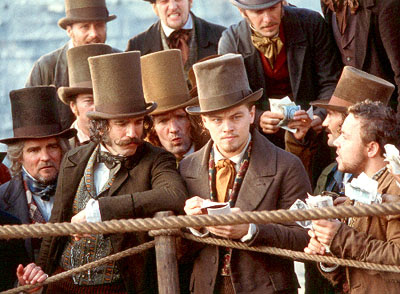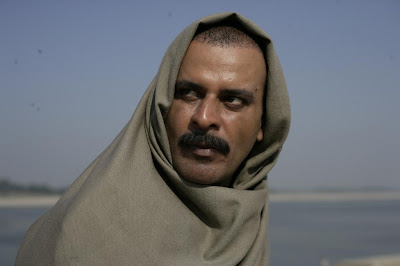A Potpourri of Vestiges Feature
Cinema’s true power lies in its enormous ability to inspire the masses, one generation after another. Victor Hugo once emphasized on the importance of a work of literature to be passed forward to the coming directions, for while the embodiment may change with time the ideas still remain fresh. Cinema, like literature, is also a manifestation of abstract thoughts and while the manifestation may be subjective the thoughts are always objective. Anurag Kashyap’s Gangs of Wasseypur serves to be a great testament to the universality and timelessness of art called cinema. It is the first Indian movie to compete at the Director Fortnight section of the Cannes Film Festival. Kashyap’s movie comes almost a decade after Scorsese’s Gangs of New York. The similarity between the two movies is obviously not limited to the name. In Gangs of Wasseypur, Kashyap presents a tale of hatred and animosity between two disputing Muslim clans, the “Khans” and the “Qureshis”, in the pre-independent India. The Qureshis are native to Wassepur while the “Khans” are regarded as the outsiders. Following a territorial dispute, Shahid Khan, along with his family, is banished by the Qureshis which eventually results in Khan’s death. Khan’s son, Sardar Khan, manages to escape and pledges to avenge his father’s death. Two decades later, Sardar Khan once again returns to Wasseypur to reclaim what was lost by his father. The battle scenes of Kashyap’s Gangs of Wasseypur mirror and at times even surpass the gore and grotesquery depicted in Scorsese’s larger than life portrayal of gang wars in the nineteenth century New York City.
It seldom happens that a movie
nominated for 10 Oscars ends up winning none. One such movie that comes to mind
is Martin Scorsese’s highly acclaimed Gangs of New York. It was Scorsese’s
sixth nomination and he failed yet again. He might have failed in wooing the
intractable Academy Members, but he did succeed in giving his audience a nigh unforgettable
experience with Gangs of New York. Scorsese succeeds in bringing to life the
nineteenth century New York City that during the time was a breeding ground of
evil as the two opposing gangs—the “Natives” and the “Irish Immigrants”—constantly
engaged in territorial battles giving rise to mass bloodshed and slaughter. The
story begins in 1846 when the Natives led by Bill “The Butcher” Cutting square
off with the Irish Immigrants led by “Priest” Vallon in Five Points area of New
York City. During the sanguinary battle that ensues, Vallon is killed by
Cutting and the Immigrants, defeated and battered, are banished. Vallon’s
juvenile son, Amsterdam, who witnesses the entire incident pledges to avenge
his father’s death. After spending 17 years in exile, Amsterdam, now a fully
grown man, returns to New York City and begins to plot his revenge against Bill
“The Butcher” Cutting.
Cinema’s true power lies in its enormous ability to inspire the masses, one generation after another. Victor Hugo once emphasized on the importance of a work of literature to be passed forward to the coming directions, for while the embodiment may change with time the ideas still remain fresh. Cinema, like literature, is also a manifestation of abstract thoughts and while the manifestation may be subjective the thoughts are always objective. Anurag Kashyap’s Gangs of Wasseypur serves to be a great testament to the universality and timelessness of art called cinema. It is the first Indian movie to compete at the Director Fortnight section of the Cannes Film Festival. Kashyap’s movie comes almost a decade after Scorsese’s Gangs of New York. The similarity between the two movies is obviously not limited to the name. In Gangs of Wasseypur, Kashyap presents a tale of hatred and animosity between two disputing Muslim clans, the “Khans” and the “Qureshis”, in the pre-independent India. The Qureshis are native to Wassepur while the “Khans” are regarded as the outsiders. Following a territorial dispute, Shahid Khan, along with his family, is banished by the Qureshis which eventually results in Khan’s death. Khan’s son, Sardar Khan, manages to escape and pledges to avenge his father’s death. Two decades later, Sardar Khan once again returns to Wasseypur to reclaim what was lost by his father. The battle scenes of Kashyap’s Gangs of Wasseypur mirror and at times even surpass the gore and grotesquery depicted in Scorsese’s larger than life portrayal of gang wars in the nineteenth century New York City.
 |
| Daniel Day-Lewis as Bill "The Butcher" Cutting in Gangs of New York |
Another striking similarity that
cannot be overlooked is the resemblance between Bill “The Butcher” Cutting and
Sardar Khan. Daniel Day-Lewis as The Butcher is the mirror image of Manoj
Bajpai’s Sardar Khan. Incredibly, both the actors deliver a tour de force to
bring their respective alter egos to life. While the circumstances that drive them
are exact opposite of each other—while Khan is the victim, Cutter is the
perpetrator—their natures seem to replicate each other’s. Both Sardar and Cutter are ferocious killers
as well as a voracious lovers, for their feral instinct to kill (their
adversaries) is remarkably matched by their play boyish passion for physical
love. It is this balance that helps them keep their composure amidst pervasive
insanity and give them the courage to single-handedly knock off their
adversaries. Both rely on a combination of brute force and acumen to rise to
subvert their adversaries. Gangs of Wasseypur, given the impact it has created
in such a short time, is one of the frontrunners for India’s entry to the
Oscars. If it reaches that far then it might even succeed in getting an Oscar
nomination which put most certainly put it in the same league as Scorsese’s
Gangs of New York.
 |
| A Still from Anurag Kashyap's Gangs of Wasseypur |
Gangs of Wasseypur serves to be a
highlight-reel of some of the most disturbing sequences ever filmed in Indian
Cinema depicting shootouts, prison-breaks, brawls, bomb blasts, rallies,
kidnappings, rapes, train-robberies, forced marriages, women in labor,
lovemaking, killings, and butchery. With Gangs of Wasseypur, Kashyap succeeds,
to a great extent, in breaking the stereotype associated with contemporary
Hindi Cinema. One facet that makes these scenes really effective is the level
of realism and conviction with which they are carried forward in the
movie. While the raw action of Gangs of
Wasseypur is highly reminiscent of Scorsese’s mano-a-mano brawls of Gangs of
New York, Kashyap and team weaves their magic in such a wonderful manner that
despite being reminded of Scorsese’s sanguinary masterpiece, one is forced to
acknowledge the inexplicable freshness of the great Indian rendition. Kashyap’s
movie, despite being looked upon as an extension of off stream cinema, has all the makings of a quintessential
Bollywood Masala movie with its adrenaline-pumping screenplay, comic-like
imposing style, relentless bursts of sanguinary action that’s up there with the
ranks of a Western, and racy dialogue that’s surfeit with vernacular expletives,
double entendres and dark humor.
 |
| A Still from Martin Scorsese's Gangs of New York |
Thus, the several similarities between
the two movies only help us understand the universality and timeless of cinema
as an art form. The two movies thus remain independent works of art that help
explain the objectivity of thought vis-à-vis subjectivity of its embodiment.
Gangs of New York Trailer
Gangs of Wasseypur Trailer
People who liked this also liked...

.jpg)









.jpg)
I have missed both the films. Will try and catch up :)
ReplyDeleteWell, you better :-)
ReplyDeleteLoved it. The Gangs of Newyork was one film that I had rushed to see immediately after its India release. I had liked the effects of a throat sliced. As a filmmaker, I had always wondered how that gory scene was created. Good to see these two movies being compared...
ReplyDeleteI am glad you did! Btw, I am equally fascinated by the scene that you have referred to. Have you succeeded in figuring out the technique implemented to film it?
ReplyDeleteWonderful review! I like Anurag Kashyap's creations..Gangs of Wasseypur was a thrilling movie. but the irony is tht mindless films keep the box office ringingin Bollywood but authentic films with real essence of cinema do not get rewarded apporpriately....I didn't know about the English version....must check out!
ReplyDeleteThanks for the review...
I am glad that you liked it! It's indeed sad that Indian audience still lacks the taste for good cinema. Btw, I assure you that Gangs of New York will not leave you disappointed :-)
ReplyDeleteBoth the films have been very close to my heart in totally different ways. They are a must watch for all the movie buffs!
ReplyDeleteThey are indeed special! Thanks a lot for sharing your valuable thoughts! :-)
ReplyDeleteIt seems like an obvious parallel, but you're the first one I heard say it. Thanks.
ReplyDeleteWell, I am really glad to hear that. Thanks for sharing your thoughts :-)
ReplyDeleteI've always maintained that GANGS OF NEW YORK follows like a typical Bollywood Revenge story... complete with the grandiose locales, larger than life characters and the over all tone and style of the film itself.
ReplyDeleteNice comparison. Incidentally, I recently reviewed both GOW & GONY, days of each other... but never made this obvious connection. *facepalm*
http://blankpagebeatdown.wordpress.com/2012/11/15/movembers-moustache-movie-madness-gangs-of-new-york-2002-hollywood/